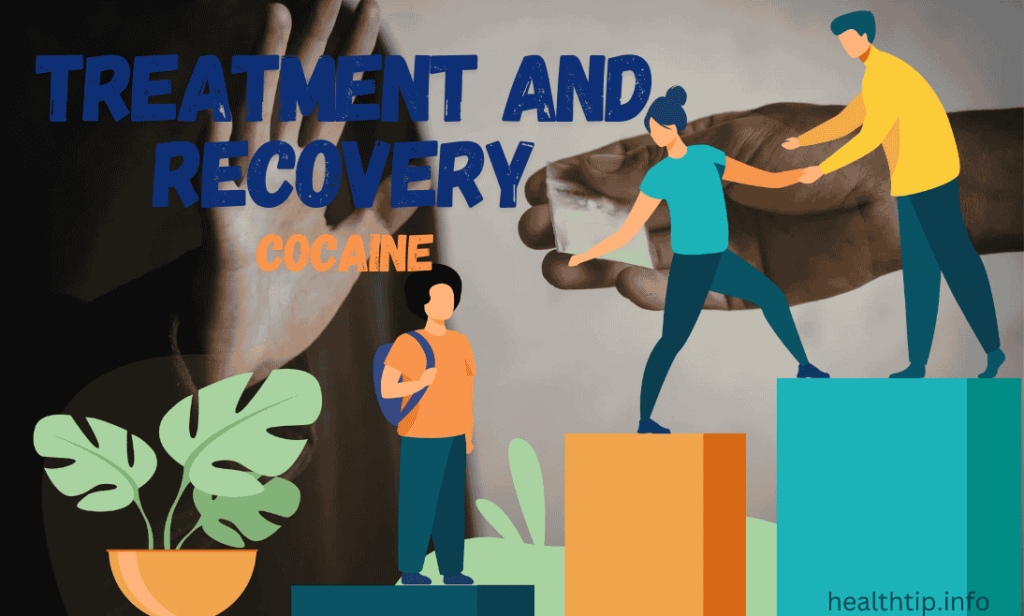What is Cocaine?
Cocaine is a drug derived from the coca plant, primarily found in South America. It is known for its stimulating effects on the central nervous system, leading to feelings of euphoria, heightened energy, and alertness. However, these effects are short-lived and often followed by harmful consequences.
You should learn about Most Addictive Drugs
Historical Use of Cocaine
Early Medicinal and Recreational Use
Cocaine has roots tracing back thousands of years, with indigenous South Americans chewing coca leaves for energy and endurance. By the 19th century, scientists isolated cocaine, using it in tonics, medicines, and even Coca-Cola.
Modern-Day Context
Today, cocaine is an illicit drug associated with significant social and health challenges, despite its former status as a “miracle drug.”
Types of Cocaine

Powder Cocaine
This form is typically snorted or injected and is a white crystalline powder. Its purity varies, often mixed with other substances.
Crack Cocaine
A crack is a smokable form of cocaine that produces an intense but short-lived high. It’s more affordable than powder cocaine, making it widely accessible and highly addictive.
How Cocaine Affects the Body

Mechanism of Action in the Brain
- The Role of Dopamine
Cocaine increases dopamine levels in the brain by preventing its reuptake, creating intense feelings of pleasure. - Immediate Effects on the Nervous System
Users experience heightened energy, alertness, and confidence but also face risks like agitation and paranoia.
Short-Term Effects
- Physical and Psychological Changes
Cocaine causes rapid heart rate, dilated pupils, and increased blood pressure, along with anxiety and restlessness. - Euphoria and Increased Energy
The drug induces a “high,” characterized by extreme confidence and energy, which quickly fades.
Long-Term Effects
- Cardiovascular Damage
Prolonged use can lead to heart attacks, strokes, and other severe conditions. - Mental Health Implications
Chronic use often results in depression, anxiety, and cognitive decline.
The Risks and Dangers of Cocaine Use
Addiction and Dependency
- Signs of Addiction
Cravings, loss of control over use, and withdrawal symptoms signal dependency. - Withdrawal Symptoms
Fatigue, depression, and intense cravings make quitting difficult.
Health Risks
- Overdose and Fatalities
An overdose can cause seizures, heart failure, or death. - Impact on the Immune System
Regular use weakens the body’s defenses, leading to frequent infections.
Why Cocaine is Popular in Culture
Cocaine has often been glamorized in films, music, and media, creating a perception of it as a “status symbol” or a way to enhance creativity and productivity. This allure has led to widespread use despite its dangers, often masking the harsh realities of addiction and its consequences.
Treatment and Recovery

Approaches to Overcoming Addiction
Breaking free from cocaine addiction requires a multifaceted approach, including medical, psychological, and social support.
Rehabilitation Programs
Inpatient and outpatient programs provide structured environments where individuals can detox, receive counseling, and rebuild their lives.
Behavioral Therapies
Cognitive-behavioral therapy (CBT) and contingency management are proven techniques that help address the underlying causes of addiction and reinforce positive behaviors.
Cocaine: Myths vs. Reality
Common Misconceptions
Many believe cocaine use is harmless in small amounts or that it isn’t as addictive as other drugs. These are dangerous myths.
The Harsh Truths
Even occasional use can lead to addiction, health complications, and devastating impacts on personal and professional lives.
Testing Cocaine Purity

What is Cocaine Purity?
Purity refers to the concentration of cocaine in a substance. Adulterants often reduce purity, increasing health risks.
Why Test Purity?
Testing helps users understand what they’re consuming, but it’s not a guarantee of safety.
How to Test Cocaine
- Reagent Testing Kits: These kits allow users to test for common adulterants but can’t determine exact purity levels.
- Laboratory-Based Testing: Professional testing provides detailed results but requires access to specialized facilities.
- Challenges in Testing: Inconsistent results and the presence of dangerous cutting agents complicate the process.
You need to learn about drug tests:
Cocaine Testing Kits
Types of Kits
- Reagent Kits
Quick and simple, these kits provide basic insights into substance composition. - Professional Kits
More comprehensive but expensive, these kits offer detailed analysis.
How to Use a Cocaine Testing Kit (Short Guide)
- Gather Supplies: Have the testing kit, a small sample, gloves (optional), and a clean surface.
- Read Instructions: Follow the kit’s manual carefully.
- Prepare a Sample: Place a tiny amount (grain-sized) of the substance on a clean surface.
- Apply Reagent: Add a drop or two of the reagent to the sample.
- Observe Reaction: Note any color change and compare it to the provided chart.
- Interpret Results: Use the chart to identify substances.
- Dispose Safely: Discard the sample and materials responsibly.
Note: These kits provide basic results, not purity or safety guarantees. Avoid drug use to eliminate risks.
How to Pass a Drug Test for Cocaine
Cocaine Detection Times
It can be detected in urine for up to 3 days, in blood for 1-2 days, and in hair for several months after use.
Common Detox Methods
- Hydration and Diet: Staying hydrated and eating healthily may slightly speed up the detox process.
- Over-the-Counter Detox Products: These products claim to help users pass tests but are unreliable.
- Risks of Cheating a Drug Test: Attempting to falsify results can lead to severe legal and professional repercussions.
How Can I Beat a Home Drug Test for Cocaine?
Synthetic Urine
While synthetic urine might evade some tests, it’s not foolproof and can be detected.
Dilution Techniques
Drinking excessive water may lower cocaine levels in urine but can also be flagged as tampering.
Why These Methods May Fail
Modern drug tests are highly advanced, often detecting manipulation attempts.
Can a Drug Test Be Administered for Cocaine?
Types of Drug Tests
- Urine Tests
The most common type, detecting recent cocaine use. - Blood Tests
Used in medical or legal settings for precise detection. - Hair Tests
Effective for identifying long-term use.
Each test has specific detection timeframes, influenced by the user’s metabolism and frequency of use.
Conclusion
Cocaine may promise euphoria and energy, but its costs are undeniable. From health risks to addiction and legal troubles, the dangers far outweigh any perceived benefits. For those struggling, seeking professional help is the first step toward reclaiming control and building a healthier future.
FAQs
1. How long does cocaine stay in the body?
Detection times vary for urine (up to 3 days), blood (1-2 days), and hair (months).
2. Can cocaine addiction be treated?
Yes, with comprehensive rehabilitation programs and therapy.
3. What are the signs of cocaine overdose?
Symptoms include seizures, rapid heartbeat, chest pain, and confusion.
4. Are there safe ways to use cocaine?
No, all cocaine use carries risks of addiction and health complications.
5. What should I do if someone I know is using cocaine?
Encourage them to seek professional help and offer emotional support.


















